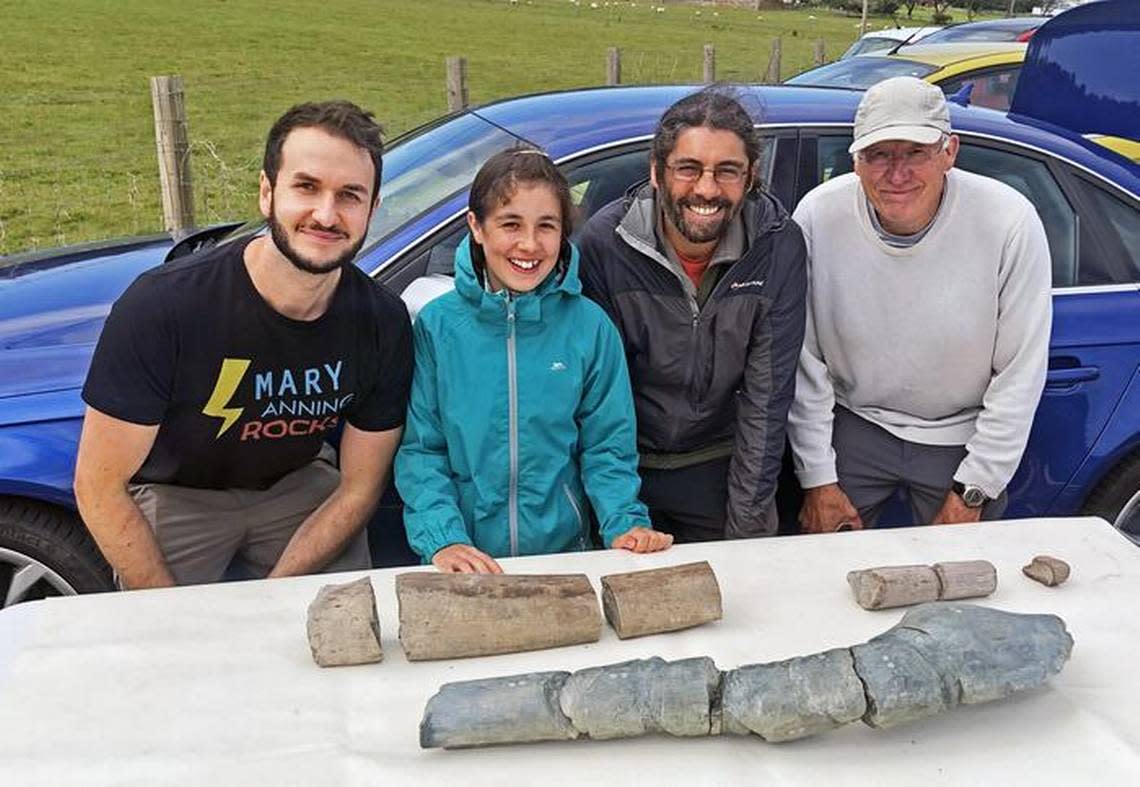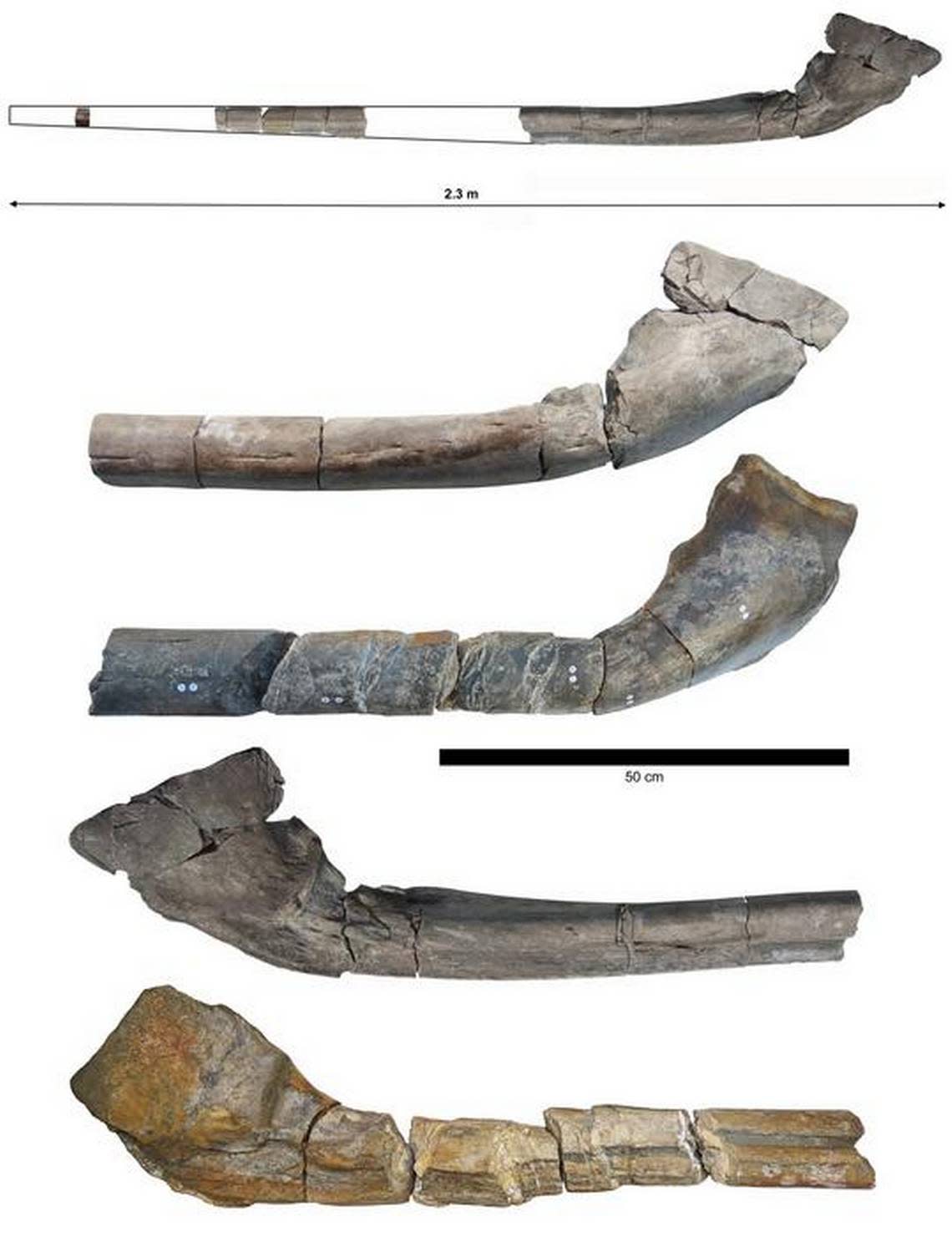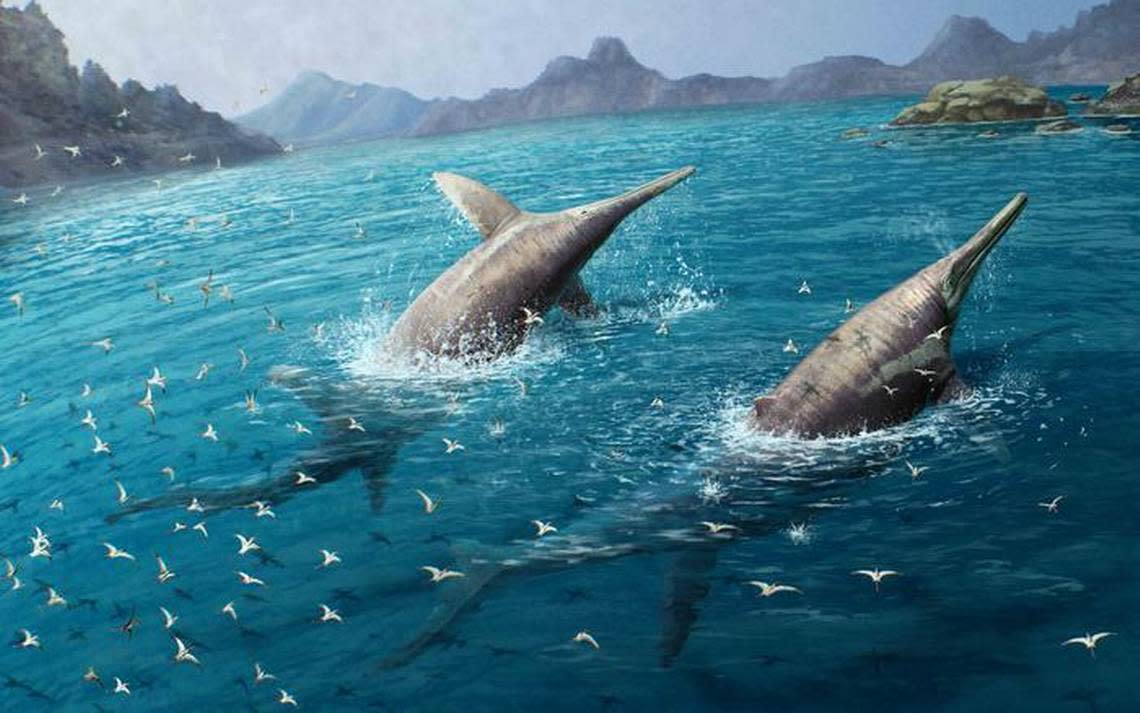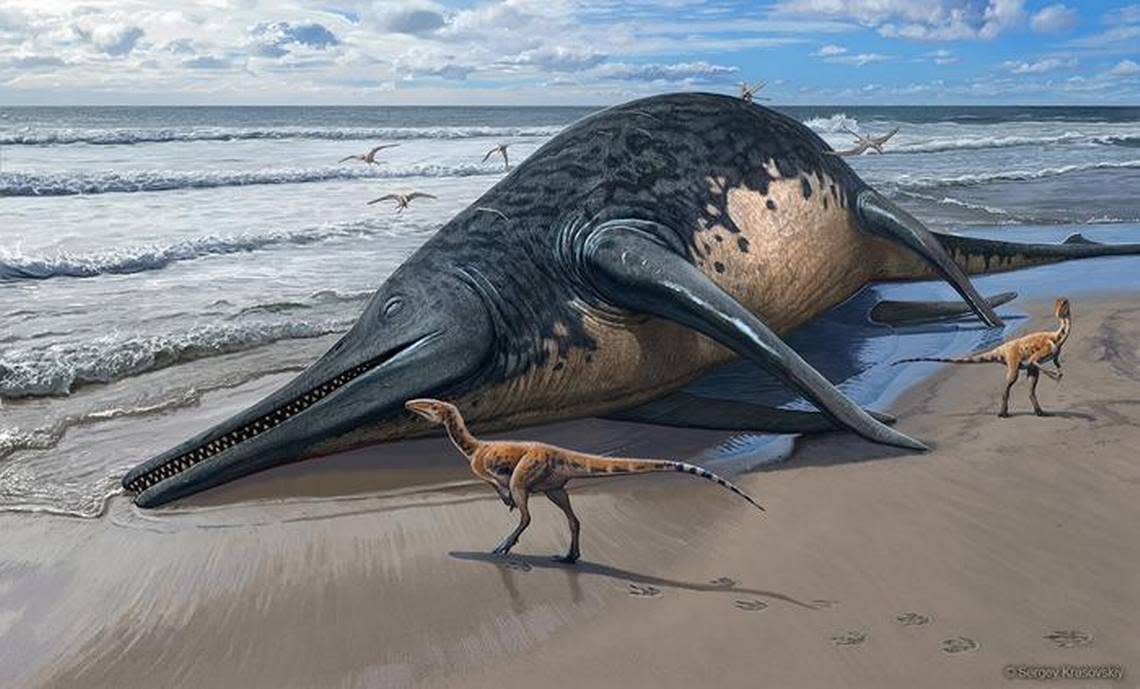11-year-old finds bones on UK beach with dad — solving ‘multimillion-year-old jigsaw’
Justin and Ruby Reynolds, a father and daughter duo, were walking along the beach in the United Kingdom when a rock stood out from the others.
Ruby, then 11 years old, saw that it wasn’t a rock at all and was actually a piece of a giant fossilized bone.
With bone in hand, the two searched the Somerset beach for other pieces, realizing they had stumbled upon something “significant,” according to an April 17 news release from the University of Manchester, published by EurekAlert.
The Reynolds’ took the bone fragments to Dean Lomax, a paleontologist at the University of Manchester.
Lomax immediately noted the similarities between the bones Ruby and Justin had found and pieces of prehistoric jawbone discovered in 2016 further along the coast by a fossil collector named Paul de la Salle, according to the university.
“I was amazed by the find. In 2018, my team (including Paul de la Salle) studied and described Paul’s giant jawbone and we had hoped that one day another would come to light,” Lomax said in the release. “This new specimen is more complete, better preserved, and shows that we now have two of these giant bones — called a surangular – that have a unique shape and structure. I became very excited, to say the least.”
Lomax enlisted the help of de la Salle and the Reynolds, along with some family members, to go back to the beach and look for more pieces.
“Over time, the team found additional pieces of the same jaw which fit together perfectly, like a multimillion-year-old jigsaw,” the university said.

Discover more new species
Thousands of new species are found each year. Here are three of our most eye-catching stories from the past week.
→Volcanic ocean creature — with 'long' legs — discovered in Japan. It's a new species
→'Flat'-headed creature — with multicolored eyes — discovered as new species in China
→Nocturnal creature — a 'rapidly-running' predator — discovered as new species in India
Over the course of two years, the group kept going back to the beach to search, and soon they had multiple pieces to form a complete section of a jaw.
“When Ruby and I found the first two pieces we were very excited as we realized that this was something important and unusual,” Justin Reynolds said in the release. “When I found the back part of the jaw, I was thrilled because that is one of the defining parts of Paul’s earlier discovery.”
Lomax and his paleontology team analyzed the bones to determine their age and what species they might belong to and published their findings in the journal PLOS One on April 17.
The bones were about 202 million years old, Lomax determined, existing in the end of the Triassic Period known as the Rhaetian.
There was only one creature that could have had a jaw this size, roughly as big as a blue whale — a giant ichthyosaur.

Not only did the jaw belong to one of the largest prehistoric aquatic animals to ever live, it was an entirely new species.
The slightly different shape of the jaw and the relatively smaller size, compared to known ichthyosaur species, helped to identify to researchers they were looking at something that hadn’t been discovered before.
The research team and the Reynolds named the new species Ichthyotitan severnensis, the “giant fish lizard of the Severn,” referring to Severn Estuary in Somerset where the bones were discovered, according to the study.
I. severensis lived about 13 million years after their slightly bigger relatives, the largest-known ichthyosaur being the Shastasauridae, according to the release and study.

At the same time that Lomax and his team were confirming the species of ichthyosaur in the U.K., a graduate student in Germany was examining bone fragments from around the world to confirm the internal bone structure of all ichthyosaurs.
He presented his work at a conference where Lomax realized they were working on similar projects, and the two started a collaboration.
“The two studies started in parallel: In 2021, I was not aware of Dr. Lomax’s project … (which started some years before), and he was not aware of my histological studies,” Marcello Perillo, a former student at the University of Bonn, told McClatchy News in an email. “Of course I was quite enthusiastic as I could see and sample the new specimen, which was kept secret while being studied before being revealed to the world.”
Perillo published his work on ichthyosaurs April 9, which included data from the Reynolds’ find.

Paleontologists continue to learn more about the ancient giants, but there is still more to discover.
“This research has been ongoing for almost eight years. It is quite remarkable to think that gigantic, blue whale-sized ichthyosaurs were swimming in the oceans around what was the UK during the Triassic Period,” Lomax said in the release. “These jawbones provide tantalizing evidence that perhaps one day a complete skull or skeleton of one of these giants might be found. You never know.”
Somerset is in the southwest region of England, across the Bristol Channel from Cardiff.
‘Gigantic’ bones stumped experts for centuries. Now, prehistoric mystery is solved
Bones of prehistoric ‘titan’ discovered in Argentina — but it may be smallest ever
Elementary school students playing in mountains stumble upon fossil of ‘iconic’ mammal
Carvings discovered on rock walls in Brazil — then something prehistoric is revealed
